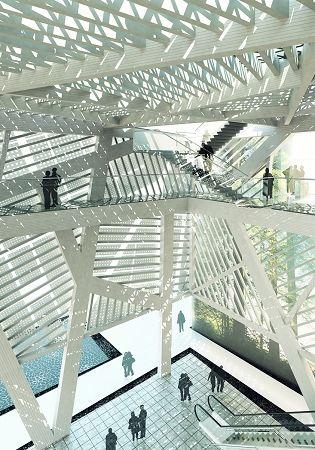Swedish Pavilion shows balance between cities and forests
2009-12-29 13:32 BJTSpecial Report: Shanghai World Expo 2010 |
The Swedish Pavilion at the Shanghai World Expo 2010 is comprised of four large cubic structures, and the first cube at the pavilion's entrance will be made of spruces which grow abundantly in Sweden. Jan Soderlind, who is charge of the Swedish Forest Industries Federation, participated in the construction of the Sweden Pavilion, and told Oriental Morning Post that both the construction and layout of the Swedish Pavilion are designed to showcase a perfect balance between Swedish cities and forests, as well as its timber industry that has been developing in a sustainable way.
 |
| The Swedish Pavilion is made of glued laminated timber and is fire and quake resistant |
"Of the pavilion's four large cubic structures, three are made of steel bars and cement, but the cube at the entrance is made of timber." Soderlind explained that one of the reasons to adopt such a layout is to demonstrate that timber is an eco-friendly building material that can be used to build large structures. "Timber is a widely-applied building material in Sweden, and we hope to bring such European building concepts to China."
The timber used to build the Swedish Pavilion is not ordinary timber, but the glued laminated timber – a brand new technology. Soderlind said that structures made of glued laminated timber helped many people survive the Great Hanshin-Awaji Earthquake in the 1990s. "We all know that China's Sichuan Province was hit by a big earthquake in 2008. We hope to promote this new building material at the Shanghai World Expo 2010 so that more people will benefit from it." In addition, the fire resistance of glued laminated timber is better than that of steel bars and cement. "Some tests indicated that in a fire, buildings made of steel bars and cement will collapse in half an hour, while buildings made of glued laminated timber will continue to stand for more than two hours."

 Mail
Mail Share
Share Print
Print


 Video
Video









 2009 China Central Television. All Rights Reserved
2009 China Central Television. All Rights Reserved